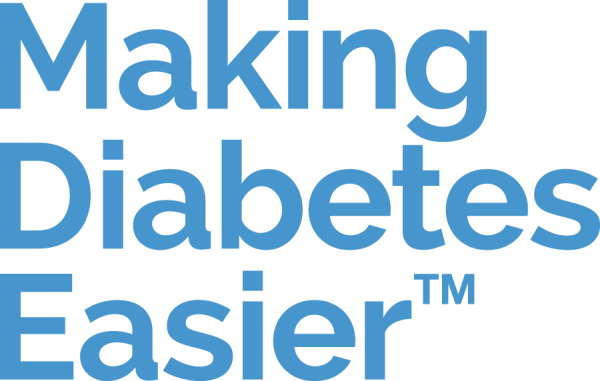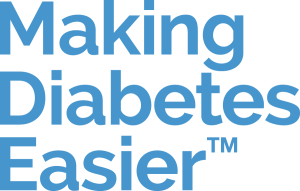What are the symptoms of type 2 diabetes?

An absence of symptoms characterises the onset of type 2 diabetes. The disease progresses slowly, sometimes for several years, without the appearance of any warning signs [1,2,3].
Certain risk factors still favour its development. If we exclude the effects of ageing, the most important are a lack of exercise and unhealthy eating habits.
Both of these factors contribute to a predisposition to excess weight or obesity, which can lead to the development of a metabolism disorder called insulin resistance, thereby increasing the risk of developing type 2 diabetes [1,2,4].
As a preventative measure, annual screening is recommended from age 40 or earlier in the event of predisposition, even when no symptoms of type 2 diabetes have been observed [4,5].
Principal symptoms
The principal symptoms of type 2 diabetes are those characteristics of hyperglycaemia:
- excessive thirst (polydipsia)
- a frequent urge to urinate
- weight loss
- excessive appetite
- chronic tiredness [3,4,5].
Is it possible to delay the progression to type 2 diabetes?
Progression to type 2 diabetes can be delayed, provided the diagnosis is made before the first symptoms of diabetes develop and the blood glucose is not too high. Indeed, early diagnosis enables a transition from an unhealthy lifestyle, especially poor dietary habits and lack of physical activity, which are key factors in developing type 2 diabetes [1,2,4,6,7].
Screening is recommended for all at-risk people (family history of diabetes, overweight, etc.) from the age of 40 [1,2,4].
Is it possible to have type 2 diabetes without having any symptoms?
Before the onset, type 2 diabetes progresses slowly for several years without showing any signs of symptoms [1,2,3].
The asymptomatic phase, called pre-diabetes, is characterised by increasing insulin resistance and fasting blood glucose levels. The pancreas is overworked, gets tired, and can no longer produce the amount of insulin needed to maintain stable blood glucose levels [1,2,6].
Do blood tests detect prediabetes?
Yes. We speak of pre-diabetes when the fasting blood glucose level is between 5.6 to 7.0 mmol/L of blood when the HbA1c level is between 5.7% and 6.4%, or when the blood glucose level is between 7.8 to 11.0 mmol/l following an oral glucose tolerance test. If the levels are higher, a diagnosis of type 2 diabetes is made [6].
Owing to the absence of visible symptoms, pre-diabetes is often diagnosed by accident during a blood test related to other health issues [2].
To correctly identify type 2 diabetes before symptoms are present and before an increased risk of potential diabetes-related complications occurs, regular screening is recommended, enabling your healthcare provider to detect any abnormal blood glucose levels and carry out further investigation [2,4].
Sources
- Markku Laakso. Biomarkers for type 2 diabetes. Mol Metab. 2019 Sep; 27(Suppl): S139–S146.
- Samantha Roberts, Eleanor Barry, Dawn Craig, Mara Airoldi, Gwyn Bevan, Trisha Greenhalgh. Preventing type 2 diabetes: systematic review of studies of cost-effectiveness of lifestyle programmes and metformin, with and without screening, for pre-diabetes. BMJ Open. 2017; 7(11): e017184.
- Kung-Ting Kao, Matthew A Sabin. Type 2 diabetes mellitus in children and adolescents. Aust Fam Physician. 2016 Jun;45(6):401-6.
- Karly Pippitt , Marlana Li , Holly E Gurgle, Diabetes Mellitus: Screening and Diagnosis. Am Fam Physician, 2016 Jan 15;93(2):103-9.
- Raquel Vieira, Selma B Souto, Elena Sánchez-López, Ana López Machado, Patricia Severino, Sajan Jose, Antonello Santini, Amelia M Silva, Ana Fortuna, Maria Luisa García, Eliana B Souto. Sugar-Lowering Drugs for Type 2 Diabetes Mellitus and Metabolic Syndrome-Strategies for In Vivo Administration: Part-II. J Clin Med. 2019 Aug 28;8(9):1332.
- Zand A, Ibrahim K, Patham B. Prediabetes: Why Should We Care? Methodist Debakey Cardiovasc J. Oct-Dec 2018;14(4):289-297.
- Ewan R. Pearson. Type 2 diabetes: a multifaceted disease. Diabetologia. 2019; 62(7): 1107–1112.





